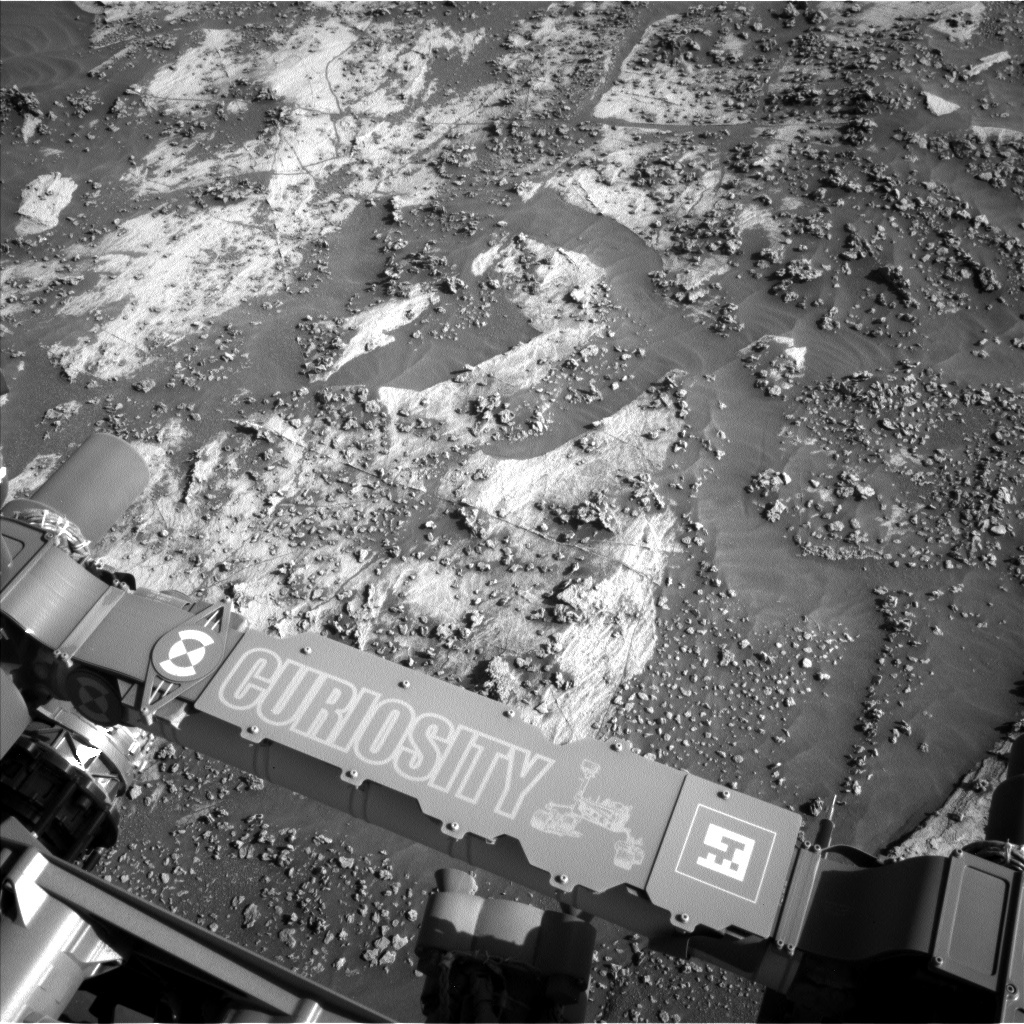2 min read

Despite the similarities, Curiosity remains on Mars and not your neighborhood movie theater after the lights come on and you find spilled popcorn all over the floor. The terrain around our rover is littered with "diagenetic" rock features—rocks that have been chemically altered through likely interaction with water in the distant past. You can see these as the abundant nodules covering much of the surface on top of the unaltered (or less altered) flat bedrock in yesterday's Navcam image of today's arm workspace. Much of the discussion today centered on whether to target one of those popcorn-like diagenetic features or the bedrock beneath with contact science, and the choice was made to aim for the bedrock. One trick was finding a large enough spot free of the diagenetic features within reach of the arm! "Sanna Bay" was eventually the choice, just above the middle of Curiosity's nameplate in the Navcam image. GEO also planned some additional imagery and a ChemCam LIBS raster on one of those popcorn kernels, "Crag and Tail."
We are almost to the winter solstice in the southern hemisphere of Mars, and this is the coldest time of year in Gale Crater. It also is the "wettest" time of year, and we are preparing to search for very thin early morning frost on the surface in the next few weeks. We are keeping our eyes open for open dusty or sandy soil patches where conditions will be most suitable for this investigation in late August or early September.
Written by Scott Guzewich, Atmospheric Scientist at NASA's Goddard Space Flight Center







